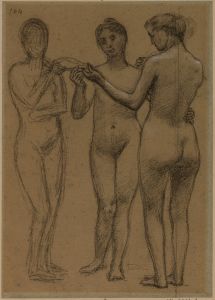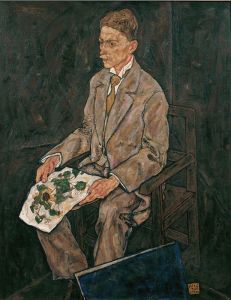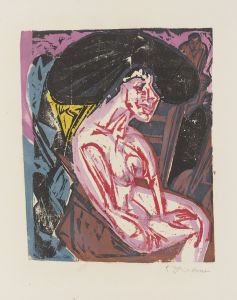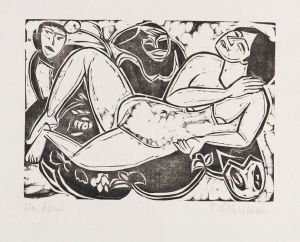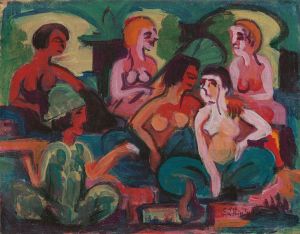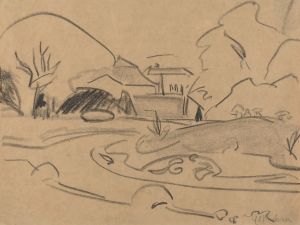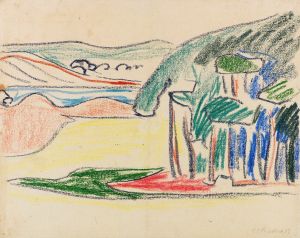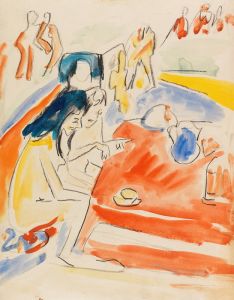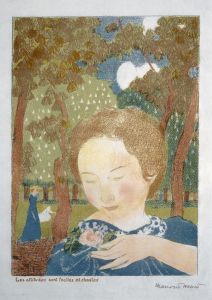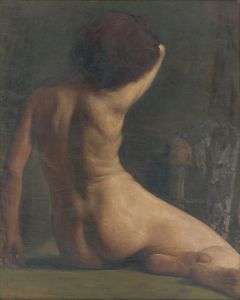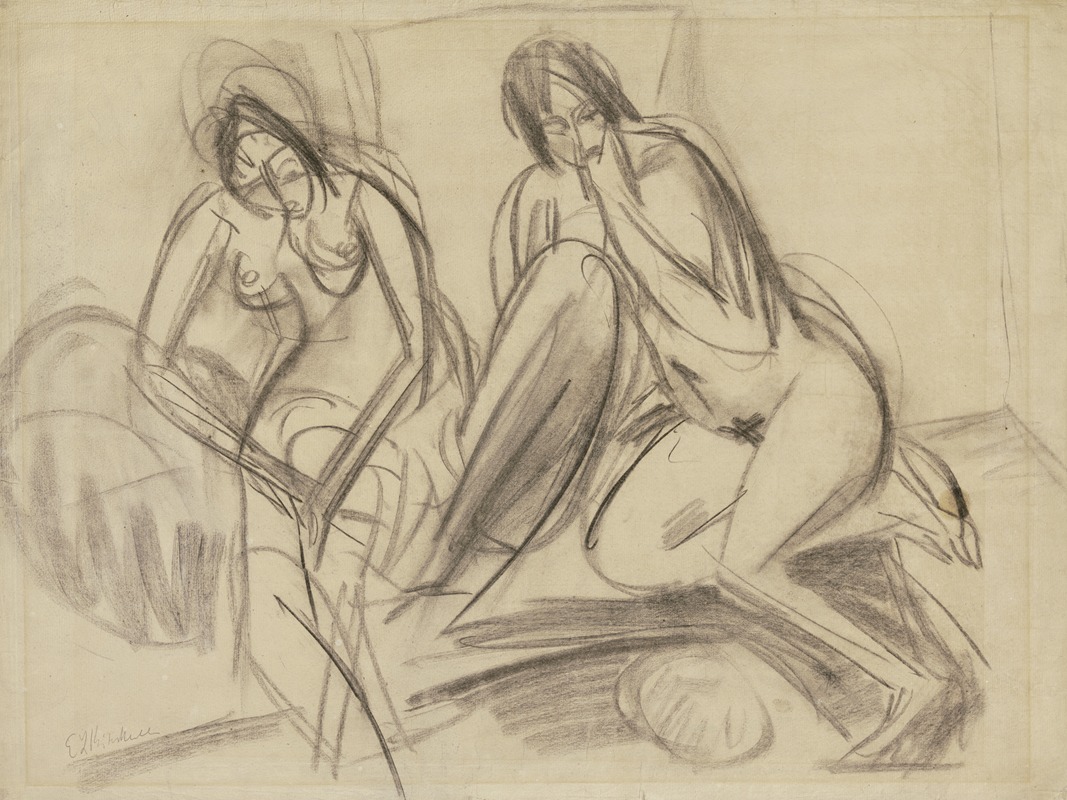
Zwei sitzende weibliche Akte
A hand-painted replica of Ernst Ludwig Kirchner’s masterpiece Zwei sitzende weibliche Akte, meticulously crafted by professional artists to capture the true essence of the original. Each piece is created with museum-quality canvas and rare mineral pigments, carefully painted by experienced artists with delicate brushstrokes and rich, layered colors to perfectly recreate the texture of the original artwork. Unlike machine-printed reproductions, this hand-painted version brings the painting to life, infused with the artist’s emotions and skill in every stroke. Whether for personal collection or home decoration, it instantly elevates the artistic atmosphere of any space.
Ernst Ludwig Kirchner's painting Zwei sitzende weibliche Akte (Two Seated Female Nudes) is a work by the German expressionist artist, created during the early 20th century. Kirchner, a founding member of the influential art group Die Brücke (The Bridge), is known for his bold use of color, dynamic compositions, and exploration of the human form. This painting exemplifies his interest in the nude figure, a recurring subject in his oeuvre, which he often depicted in natural, intimate, or domestic settings.
The artwork portrays two seated female nudes, rendered in Kirchner's characteristic expressionist style. The figures are depicted with elongated forms and angular lines, emphasizing their physicality while also imbuing the scene with emotional intensity. Kirchner's use of vibrant, non-naturalistic colors and loose brushwork reflects the influence of post-impressionism and fauvism, as well as his desire to break away from traditional academic art conventions. The composition is intimate, focusing on the interaction between the two figures and their environment, though the setting is often abstracted or simplified in Kirchner's works.
Kirchner's approach to the nude was shaped by his belief in the connection between art and life. He often sought to depict the human body in a way that emphasized its natural beauty and vitality, rejecting the idealized forms of classical art. His nudes frequently convey a sense of immediacy and spontaneity, as if capturing a fleeting moment. This aligns with the broader goals of Die Brücke, which aimed to create art that was raw, direct, and emotionally resonant.
The painting was likely created during a period when Kirchner was deeply engaged with the themes of modernity and primitivism. Like many of his contemporaries, he was influenced by non-Western art forms, which he saw as more authentic and unspoiled by industrialization. This influence can be seen in the simplified forms and expressive distortions present in his work.
Ernst Ludwig Kirchner's career was profoundly affected by the political and social upheavals of his time. His art was labeled "degenerate" by the Nazi regime, and many of his works were confiscated or destroyed. Despite these challenges, Kirchner remains a central figure in the history of modern art, and his contributions to the expressionist movement continue to be celebrated.
Specific details about the provenance or current location of Zwei sitzende weibliche Akte are not readily available. However, Kirchner's works are held in numerous major museums and private collections worldwide, reflecting his enduring significance as an artist.





